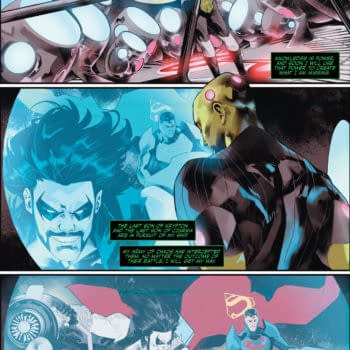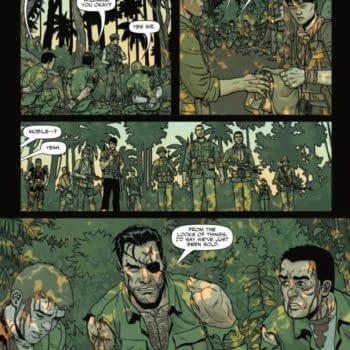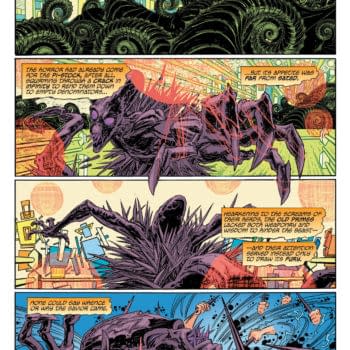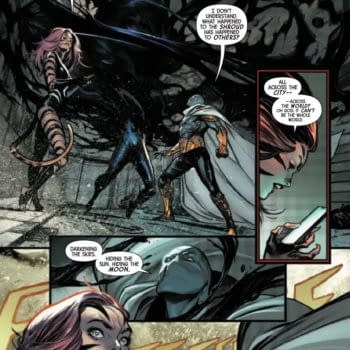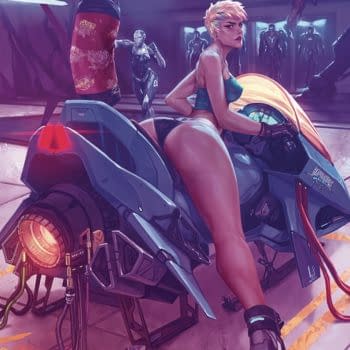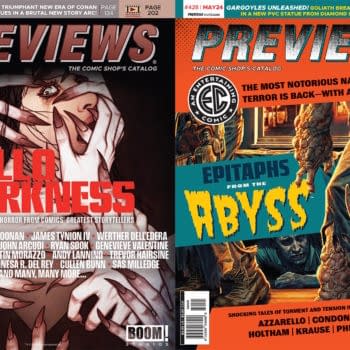Posted in: Comics | Tagged: Bill Sienkiewicz, Comics, entertainment, Fanboy Comics, Fearworms: Selected Poems, horror, illustration, poetry, Robert Payne Cabeen
Fearworms Asks 'What Do You Fear?'
By Michele Brittany, a West Coast Bleeding Cool Correspondent
What is something that makes you squirm? Maybe squirm uncomfortably? Makes you want to avoid if at all possible? Maybe it's a long-standing fear as a child? Maybe its snakes in an Egyptian pit like Indiana Jones in Raiders of the Lost Ark or maybe its clowns like in Stephen King's It. Fear is something we have; it may be an animal, a person, or it might be psychological. As much as we may fear something, I think that many of us still love a good scare – be it a film, a book, a television show, etc – we like the suspense, the tension, and a good pay off that "gets" us, yet can make us laugh (okay, maybe a nervous laugh). If you agree, then you will want to read Robert Payne Cabeen's new book, Fearworms: Selected Poems, the latest book being released by independent publisher Fanboy Comics this coming Friday, February 20th.

How did Cabeen come to writing horror poetry and develop his style? His love of horror started during his pre-teen years. Growing up in Southern California, he was surrounded by popular culture. He was drawn to monster movies as well as reading literature and horror stories, so his favorite writers included Edgar Allan Poe, Rudyard Kipling, and Samuel Taylor Coleridge (he wrote The Rime of the Ancient Mariner). By high school, Cabeen stated he was "writing with intent" because what he was reading did not have the elements he was looking for: in your face gore, but with humor. While he appreciated "classical" poetry, he knew he wanted his poetry to be straightforward – not the fanciful and artsy flourishes that can lose the audience, so nary a thee or thou will you find in his poetry.

Over the intervening years since high school, Cabeen has honed his writing skills through screenwriting. The format has maniacal restrictions, but Cabeen said he "likes that focus." He worked on Heavy Metal 2000 (Columbia TriStar), A Monkey's Tale and Walking with Buddha and with many studios over the years – Disney, Warner Brothers, Universal – as well as a creative director for Streamline Pictures. For Streamline, Cabeen worked with founder Carl Macek to bring Japanese Anime to America. The association led to Streamline publishing Cabeen's Tainted Treats in 1994. Illustrations by well-known industry artists William Stout, Dave Stevens, Mike Mignola, Simon Bisley, Tim Gula, and Cabeen, an illustrator himself, accompanied his horror stories.

"I envy those who live a life where nothing strange takes place. The lucky ones whose days and nights slip by without a trace. At one time I was one of them. I never really knew that horror waits at every turn and nightmares can come true. By random chance or dark design my ordered life was thrown into a state of dread and fear that I have never known."
What did you think? Are you asking yourself "Hey, that wasn't a poem!" Okay, I'll be honest: I did a switch. I did not want you to get hung up on the poem form. I wanted you to concentrate on the words. Skipping ahead just a little bit and presenting the poem in its true form:
The interstate was long and flat.
The night was warm and dry.
The restful rhythm of the road
Was like a lullaby.
I nodded off, then jerked awake.
I'd driven much too long.
So, I pulled off the interstate,
Where I did not belong.
Cabeen's writing style is modern, sleek and as he stated, his poetry is "not a slave to the meter and rhythm. They fall to the background and become the engine for his storytelling." The mechanics become invisible. Because his poems tend to be of a longer narrative form, he employs the story structure we are all familiar with: beginning, middle, end. He takes his time with word choice so the poem does not come off being forced or contrived.

I hate to burden you this way,
My story's cruel and sad.
But, if I don't tell someone soon,
The truth will drive me mad.
Before I start, I caution,
If I may be so bold,
That when my story is complete
It cannot be untold.
In all, Cabeen selected a dozen poems, a few were short while others were long narratives. He specifically chose poems that he felt would "stick in one's mind." In this way, he could explore the "mechanization of the mind" those spaces in the grey matter that triggers the mind's ability to remember things, such as a commercial jingle or all the words to a long ago favorite song. And, as mentioned earlier and in the introduction of Fearworms, Cabeen wants people to read his poems out loud, to perform them and to make memories around them. "I want my poetry to be fun," Cabeen added.

Inside, Cabeen's skills as an artist and illustrator shine right alongside his carefully chosen words. When asked if the art or story came first, Cabeen said it was the "words that always came first." Each poem is accompanied by an image and then followed up in subsequent pages with illustrations in the borders and gutters of the page. For instance, in the page gutters of "Rule 44" Cabeen blended circuit boards and space, while in "Uptown Ribs" ribs are tucked into the full length of the gutters. Even the inside covers of the book are filled with a slimy sea of purplish hued squirming worms that are unsettling, especially if you fear worms and/or snakes.
Fanboy Comics Managing Editor Barbra Dillon met Cabeen through a mutual friend. She had read Tainted Treats and thought the poems were gruesome and filled with horror, and it reminded her of the 1981 book Scary Stories to Tell in the Dark by Alvin Schwartz. The stories were creepy and were accompanied with black/white illustrations. For Dillon, Cabeen's "artwork is stunning" and described his poems as "manically crafted word machines are visceral, psychological, haunting, and terrifyingly humorous."

Welcome back! If your toes are tingling, your brow dripping with anxiety to hear more, then Fanboy Comics invites you to attend A Night of Fearworms this coming Friday, February 20th at the ACME Comedy Theatre in North Hollywood at 7:30 PM. The festivities include readings from Fred Stoller (Everybody Loves Raymond) and Camden Toy (Buffy the Vampire Slayer), and Cabeen will be on hand to spin nightmarish tales and sign your book, available for purchase. The event is free.
If you cannot make the book launch, look for Fanboy Comics at some of the upcoming cons being held in Southern California in the coming months: Long Beach Comic Expo, Wondercon, and San Diego International Comic Con, just to name a few. And check Fanboy Comics website for more upcoming event locations and more details about Cabeen's book.
Michele Brittany is an independent popular culture scholar and semi-professional photographer and editor of the James Bond and Popular Culture: Essays on the Influence of the Fictional Superspy (McFarland & Company). She regularly posts reviews and analysis on the spy/espionage genre on her blog, Spyfi & Superspies and can be followed at Twitter @mcbrittany2014.










